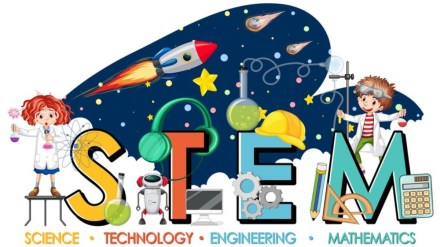By Rajeev Tiwari
In the fast-paced and ever-evolving world of technology, the importance of STEM education cannot be overstated. STEM, an acronym for Science, Technology, Engineering, and Mathematics, is not just an educational framework; it’s a gateway to shaping the innovators and problem-solvers of tomorrow. This article delves into the critical role that STEM education plays in preparing students for the challenges of a rapidly changing technological landscape, emphasizing its impact on essential skills development and the transition from the classroom to professional careers.
The Foundation of Essential Skills
At its core, STEM education is about more than just teaching specific subjects; it’s about fostering a mindset. From an early age, students immersed in STEM programs learn to think critically and approach problems analytically. The application of scientific principles, the mastery of technology, the engineering of solutions, and the understanding of mathematical concepts all contribute to the cultivation of essential skills.
Critical thinking and problem-solving, two pillars of success in any field, are instilled in students as they navigate through STEM-related challenges. These skills are not confined to the classroom; they become a part of their cognitive toolkit, preparing them to tackle real-world issues with confidence and ingenuity.
Nurturing Innovators from the Start
STEM education goes beyond textbook learning; it is a breeding ground for innovation. By engaging in hands-on activities, experiments, and projects, students learn the art of innovation through trial and error. Whether it’s designing a simple machine, coding a program, or conducting a scientific experiment, students are encouraged to explore, question, and create.
The emphasis on innovation in STEM education is a strategic move to shape a generation that not only understands existing technologies but also contributes to their evolution. This mindset of innovation is a driving force that propels students into STEM-related careers, where they become the architects of the technological future.
The Transition to Professional Environments
As students graduate from educational institutions and step into the professional world, the impact of STEM education becomes increasingly evident. The skills acquired in STEM programs serve as a solid foundation for navigating the complexities of professional environments.
In the workplace, the ability to think critically allows STEM-educated individuals to analyze problems, propose effective solutions, and adapt to unforeseen challenges. Problem-solving, a skill honed through various STEM activities, becomes second nature, enabling professionals to approach tasks with a strategic mindset.
Moreover, STEM education instills a sense of adaptability. In a world where technology is in a constant state of flux, the capacity to adapt and learn quickly is invaluable. STEM-educated individuals are not just equipped with specific technical knowledge; they are adept at continuous learning, a trait that is essential for staying relevant in rapidly evolving industries.
Driving Innovation and Shaping the Future
The importance of STEM education becomes particularly apparent when we consider its role in shaping the future of industries and economies. STEM-educated professionals are the driving force behind innovation, developing groundbreaking technologies that shape our world. From advancements in healthcare to sustainable energy solutions, STEM professionals are at the forefront of transformative change.
The global challenges we face, from climate change to the healthcare crisis, require innovative solutions. STEM education provides the foundation for a generation capable of tackling these challenges head-on. The interdisciplinary nature of STEM encourages collaboration across fields, fostering a holistic approach to problem-solving that is essential for addressing complex, real-world issues.
Conclusion
STEM education is not just a set of subjects; it’s a philosophy that prepares students for the demands of a technology-driven world. It lays the groundwork for essential skills such as critical thinking, problem-solving, and innovation, creating a pipeline of adaptable and creative thinkers ready to take on the challenges of the professional world.
As we witness the accelerating pace of technological advancement, investing in STEM education is an investment in the future. It ensures that the next generation is not merely consumers of technology but active contributors, propelling innovation and shaping a future that is driven by knowledge, creativity, and the transformative power of STEM.
The author is co- founder of STEMROBO Technologies. Views are personal.
